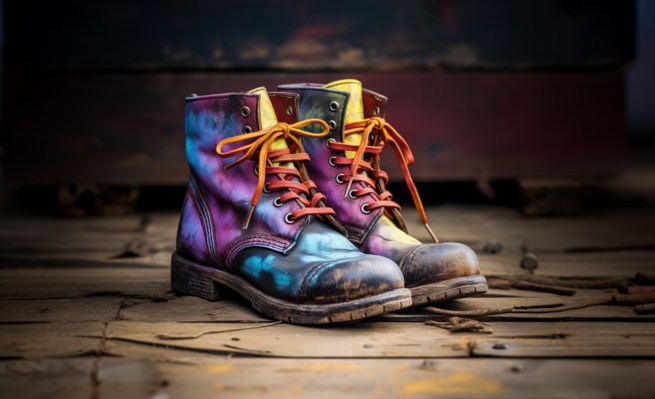Adam Savage of MythBusters fame has a Savage Rule of Tools: If you think you need a new tool, buy the cheapest one you can find. Then, when it breaks or wears out, you’ll have a much better picture of how you use the tool and how often you need it.
It’s a counterintuitive form of common sense. Living by that rule, however, illustrates how awful a lot of products are. It’s ridiculous how many times I’ve ordered something from AliExpress only to realize it is of terrible quality and often not fit for the purpose. Still, “poorly made by the cheapest bidder” is the name of that game, so perhaps terrible quality isn’t that surprising. What I find far more worrying, though, is how often midrange products are, in a word, useless.
Sitting with this reminded me of Sam Vimes’ boots theory. Terry Pratchett’s take on that theory in the Discworld series (Book 15, Men at Arms) presents a profoundly simple and poignant illustration of economic inequality and the implications of short-term versus long-term investment. Paraphrased, the theory argues that it’s cheaper to buy expensive, high-quality goods that last a long time than buying cheaper, lower-quality goods more frequently.
However, as we traipse deeper into late-stage capitalism, a paradoxical phenomenon is taking shape. Despite economic prosperity enabling more people to afford high-quality goods, there seems to be an overarching trend toward lower quality and disposability. In a nutshell: Even if you can afford high-quality products that are designed and built to last, it’s becoming increasingly challenging to find and buy products that meet that bar.
Why is it that in a world rich in resources, technological advancements and consumer purchasing power, it’s becoming harder to find high-quality, durable goods? Why do companies continue to sell us products that are built to fail, ensuring we’ll need replacements soon enough?
More and more, it’s starting to seem as if there simply isn’t a financial incentive to build high-quality products. Let’s dive into the modern dynamics of capitalism, consumer behavior and corporate incentive structures.
The spirit animal of capitalism is bamboo: Hypergrowth above everything. Companies are encouraged by stakeholders to continuously increase profits, which often leads to an emphasis on sales volumes rather than on product longevity. The more frequently a product needs to be replaced, the higher the chances people will buy it repeatedly.
You may have heard of “planned obsolescence” — yep, that’s what’s going on here. In a sense, it’s a strategy in which you design goods to become obsolete or stop functioning after a certain period so you can drive future sales.
Another factor is the changing dynamics of consumer behavior. In our fast-paced, trend-driven society, there’s a tendency to seek immediate gratification rather than long-term satisfaction. Fueled by the ubiquity of social media and how quickly it facilitates changes in trends, the lure of novelty often outweighs the practicality of longevity. Coupled with aggressive marketing strategies that emphasize constant product updates, consumers are encouraged to discard and replace items more frequently than they need to.
The kicker is that producing short-lived goods isn’t entirely without economic logic. Lower production costs can make goods more accessible to a wider consumer base, particularly in developing economies. Furthermore, by replacing goods more frequently, businesses stimulate economic activity and, arguably, promote innovation and progress.
There are some major losers in this equation, though: the environment, society, and economy. Rapid product turnover leads to alarming levels of waste, contributing to our escalating environmental crisis. Meanwhile, the economic advantages of frequent purchases are skewed toward wealthier consumers who can afford to replace items frequently, sending wealth inequality into a downward spiral.
So, can we do anything to thwart or change this trend? Maybe. I wish there were a way to incentivize corporations to focus on the long-term durability of their products. Legislative measures to discourage planned obsolescence, perhaps, or ways of promoting transparency with regard to product life expectancy.
As a consumer, you can vote with your wallet by altering your consumption patterns. Embracing a culture of “slow consumption,” which values quality and longevity over novelty, could help counteract the current trend of disposability. TikTok et al. have a role to play here: The trend of “Shein hauling,” where people buy a bunch of essentially disposable clothes, try them on once and then discard them, needs to die a quick and messy death, to pick one example.
My hope is that empowered consumers who demand better quality and long-lasting products can significantly influence what’s available in the market.
We also need to rethink what “economic growth” entails. Some corporations are trying to report a triple bottom line — people, planet and profit, in that order of importance — and some have started to add their carbon emissions as part of their quarterly reporting. One way to drive “growth” could be to have steady revenue while reducing carbon emissions.
The concept of a circular economy that encourages the reuse and recycling of materials offers a sustainable alternative to our current linear model of “take-make-dispose.” By integrating a circular approach into the economic system, we could simultaneously reduce waste and stimulate economic activity.
Despite advancements and greater affluence, the availability of high-quality, long-lasting goods is diminishing. As startup founders, you have an opportunity to make choices and decisions for our companies. You don’t have to buy into a model of economic growth that puts part of the cost on the planet, for example.
Maybe you can be the startup that can create the product equivalent of a good pair of boots that will last your customers a lifetime.
